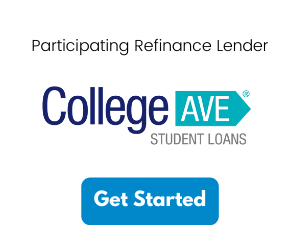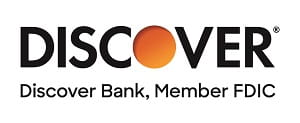- Prioritize federal student loans over private student loans, as federal loans provide a wider array of repayment and forgiveness alternatives.
- If you have good to excellent credit, consider refinancing your loans to potentially secure a new loan with a lower interest rate, leading to cost savings.
- Check to see if your employer offers tuition assistance or repayment assistance.
- Pay more than the minimum payment, extra payments will help reduce your principal loan amount and ultimately save you in interest costs.
- Most lenders will offer an interest discount when you sign-up for auto-debit.
- Be sure to claim your student loan interest on your tax forms and take advantage of the student loan interest deduction.
Borrowing and repaying student loans can often be complicated, not to mention costly. What are some ways you can save money and make life a bit easier? Learn some expert hacks to alleviate the stress of borrowing and repaying student loans.
1. Borrow federal student loans first. If loan debt is unavoidable, consider borrowing federal first, because federal student loans are usually less expensive, easier to qualify for, and have more repayment options than private student loans. Andrew Fiebert, co-founder of Listen Money Matters (a personal finance podcast and blog), reminds students that, “you can borrow between $5,500 to $12,500 from the Federal Direct Loan Program as an undergraduate. Although, you will want to keep the borrowing low, federal loans also provide protection programs. For instance, if you lose your job or go back to school, the federal loan program offers you the ability to defer payments.”
2. Get your student loans forgiven. If you qualify, Federal Public Service Loan Forgiveness programs cancel your remaining Direct Loan debt after you have made 120 qualifying on-time monthly payments (10 years of payments) while working full-time in a public service job.
What's a Public Service Job?
A public service job includes working for government organizations at any level (federal, state, local, or tribal), AmeriCorps and the Peace Corps, tax-exempt not-for-profit organizations under Section 501(c)(3) of the Internal Revenue Code, and other qualifying not-for-profit organizations. To qualify for loan forgiveness under the Public Student Loan Forgiveness plan, monthly payments must have been made under specific repayment plans. Generally, the forgiven amount is not taxable income.
3. Refinance your loans. One of the best ways to save money is to get a better interest rate. Refinancing may give you that opportunity. Shop around to compare refinance programs and see what type of rate you may qualify for. Not only can you make life simpler by consolidating multiple student loans into one, but refinancing may help you modify your budget and start tackling longer-term savings goals.
Compare Student Loan Refinancing Lenders
4. Another benefit of refinancing? You may be eligible to release a cosigner from your private loans. This might just be the mother of all gifts to mom/dad/aunt/uncle or whoever had your back while you were trying to pay for your education.
Side note: The government's Direct Consolidation Loan is also an option for federal loans. It may extend your repayment term and reduce your monthly payment. This particular program is limited to federal loans only. In contrast, refinancing through a private lender gives you the option to merge both private and federal student loans, and may offer considerable savings with a lower interest rate.
5. Look at other options. Before you borrow any type of educational loan, Mark Kantrowitz, Publisher and Vice President of Strategy at Cappex.com, recommends that you “focus on non-loan funding, such as scholarships and education tax benefits.” Additionally, tuition installment plans may be a reasonable alternative to long-term student loan debt.
6. Run a crowdfunding campaign. Crowdfunding is practically universal these days. You can raise funds from friends and family to ask for a graduation gift to help you repay your student loans. Have a compelling story prepared and ask for donations in lieu of traditional gifts. Sites like GoFundMe and Zerobound are good options. Zerobound helps you raise funds toward your student loan debt in exchange for volunteering in the community.
7. Leverage rebate programs to earn cash back towards your student loan. Get paid for things you do every day - like shopping and eating out. The best part is you can invite family to join in and the cash back they earn can be applied to your account.
8. Ask your employer to contribute to your student loan debt. Some employers offer either tuition assistance or student loan repayment assistance, or both, as a meaningful benefit to employees. But this is not a universal perk (we wish). According to a Forbes article, approximately 4% of employers have adopted student loan repayment assistance as part of their benefits package. Staples®, PwC, and Aetna are among the growing list of employers offering this perk. Keep in mind that student loan reimbursement is treated as taxable income.
9. Say no to excessive loan amounts. If you and your family do decide to apply for an educational loan, remember not to treat the annual and cumulative limits on student loans as targets. According to Kristen Moon, an independent college counselor and founder of www.MoonPrep.com, “The best way to avoid unmanageable student loan debt is to not take on more loans than necessary.” Every dollar you borrow will cost about two dollars by the time you repay the debt. Budget before you borrow and try to borrow only what you absolutely need.
10. Don't pay only the minimum loan amount. Paying an extra $20 each month on your student loans will save about $906 in total interest repaid (based on a $20,000 loan at 6.8% with a 10-year repayment term). Paying an extra $50 each month on the same loan will save about $1,916 in total interest repaid. Even a small amount of extra money can add up to impressive savings long-term. To estimate your federal student loan repayments, visit: https://www.studentloans.gov/myDirectLoan/repaymentEstimator.action.
11. Sign up for auto-debit. Many lenders offer an interest rate reduction of between 0.25% to 0.50% if you sign up for auto-debit. This is where your monthly loan payment is automatically deducted from your bank account. This can save as much as $300 in interest for every $10,000 borrowed, assuming a 10-year repayment term and as much as $700 on a 20-year repayment term.
12. Pay while you're in school. “One way to minimize student loans is to start paying the interest on unsubsidized loans during the in-school and grace periods to prevent the loan from growing larger,” suggests Marc Roche, co-founder of annuitieshq.com. “A lot of student loans allow borrowers to defer repaying while being in school.” If you're an undergrad and you're lucky enough to only have subsidized loans, the government picks up the tab for the interest that accrues. But if you have unsubsidized loans, or if you're a grad student, the interest that accrues on your federal student loans is your responsibility. Ditto for any private loans. Paying now, even a little bit, helps.
13. Get organized & track your student loans. It is easy to lose track of student loans, especially during the six- or nine-month grace period after graduation. Before your grace period ends, it is time to get organized and plan for repayment. You should start by making a list of all your student loans, including the name, website, telephone number, payment address, and other contact information for the lender and servicer. Also, record the loan ID numbers, the amounts owed, the interest rates, the monthly payment amount, the name of the loan program, and the payment due dates. Use a student loan checklist to keep track of vital loan information. Lastly, get a free credit report from annualcreditreport.com to make sure all your private student loans are accounted for.
14. Get a tax write-off. Take advantage of the student loan interest deduction which allows up to $2,500 in federal and private student loan interest to be deducted as an above-the-line exclusion on federal income tax returns. This deduction can be claimed even if the taxpayer does not itemize.
15. Speak up. When facing difficulties with repaying your student loan, it's vital to promptly inform your lender. Rest assured, solutions like temporary deferment or forbearance can offer assistance. Seize this opportunity to explore income-driven repayment options such as Income-Based Repayment and Revised Pay As You Earn. Noteworthy is the fact that utilizing these options won't harm your credit score; however, even a mere 30-day delay can impact it. Remember, the federal student loan program grants borrowers special privileges including access to repayment aid. When in doubt, reach out to your lender to discuss the options available to you.
16. Use the formula of total student loan debt < income. The total debt from your student loans at graduation should be less than your expected annual starting salary, ideally, a lot less. If this is the case, you should be able to repay your student loans in ten years or fewer. Shop around for private student loans. Brett Graff, a syndicated lifestyle and financial expert known as the Home Economist recommends that, “If you’ve maxed out your federal loan options, consider a private student loan, Keep in mind that if you qualify for one private loan, you likely qualify for many of them and interest rates can vary greatly. Remember that you're the customer, so also ask about whether the loan offers some of the benefits that federal loans offer, such as payback that relates to future income.” Kristen Moon suggests that “if a student has medical issues, it might make sense to buy college tuition insurance. This is becoming more and more common, given the high price of tuition. This option could protect students from having to take on more loans to finish college if they end up with an illness and must withdraw.”











